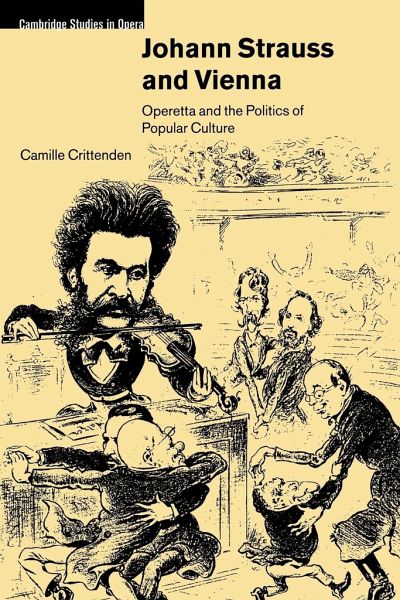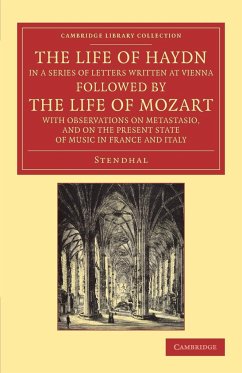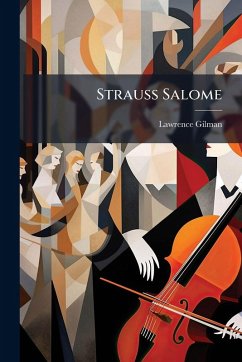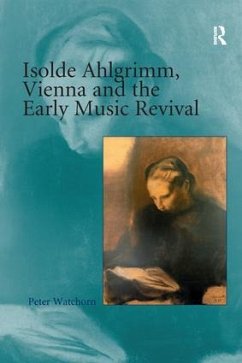
Johann Strauss and Vienna
Operetta and the Politics of Popular Culture
Herausgeber: Groos, Arthur; Carter, Tim

PAYBACK Punkte
16 °P sammeln!
This book examines nineteenth-century Viennese operetta and the historical context in which it was created.The transformation of Vienna and the Habsburg Empire at the end of the nineteenth century was accompanied by the development of a new musical genre, Viennese operetta, and no composer was better suited than Johann Strauss to express his native city's pride and anxiety during this period. Camille Crittenden provides an overview of Viennese operetta, then takes Strauss's works as a series of case studies in the interaction between stage works and audience. The book also examines Strauss's r...
This book examines nineteenth-century Viennese operetta and the historical context in which it was created.
The transformation of Vienna and the Habsburg Empire at the end of the nineteenth century was accompanied by the development of a new musical genre, Viennese operetta, and no composer was better suited than Johann Strauss to express his native city's pride and anxiety during this period. Camille Crittenden provides an overview of Viennese operetta, then takes Strauss's works as a series of case studies in the interaction between stage works and audience. The book also examines Strauss's role as national icon during his lifetime and throughout the twentieth century.
Table of contents:
List of illustrations; Preface; List of abbreviations; 1. The birth of a genre; 2. Creators and performers of Viennese operetta; 3. 'Austria personified': Strauss and the search for Viennese identity; 4. From ballroom to theater: musical style and Indigo und die vierzig Rauber; 5. Die Fledermaus and the illusion of Carnival in Vienna; 6. Austro-Hungarian relations and Der Zigeunerbaron; 7. Waltzing Brunnhilde: Zukunftsmusik and Viennese operetta; Epilogue; Appendix: Synopses; Notes; Bibliography; Index.
The transformation of Vienna and the Habsburg Empire at the end of the nineteenth century was accompanied by the development of a new musical genre, Viennese operetta, and no composer was better suited than Johann Strauss to express his native city's pride and anxiety during this period. Camille Crittenden provides an overview of Viennese operetta, then takes Strauss's works as a series of case studies in the interaction between stage works and audience. The book also examines Strauss's role as national icon during his lifetime and throughout the twentieth century.
Table of contents:
List of illustrations; Preface; List of abbreviations; 1. The birth of a genre; 2. Creators and performers of Viennese operetta; 3. 'Austria personified': Strauss and the search for Viennese identity; 4. From ballroom to theater: musical style and Indigo und die vierzig Rauber; 5. Die Fledermaus and the illusion of Carnival in Vienna; 6. Austro-Hungarian relations and Der Zigeunerbaron; 7. Waltzing Brunnhilde: Zukunftsmusik and Viennese operetta; Epilogue; Appendix: Synopses; Notes; Bibliography; Index.














